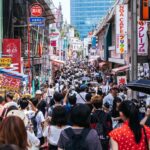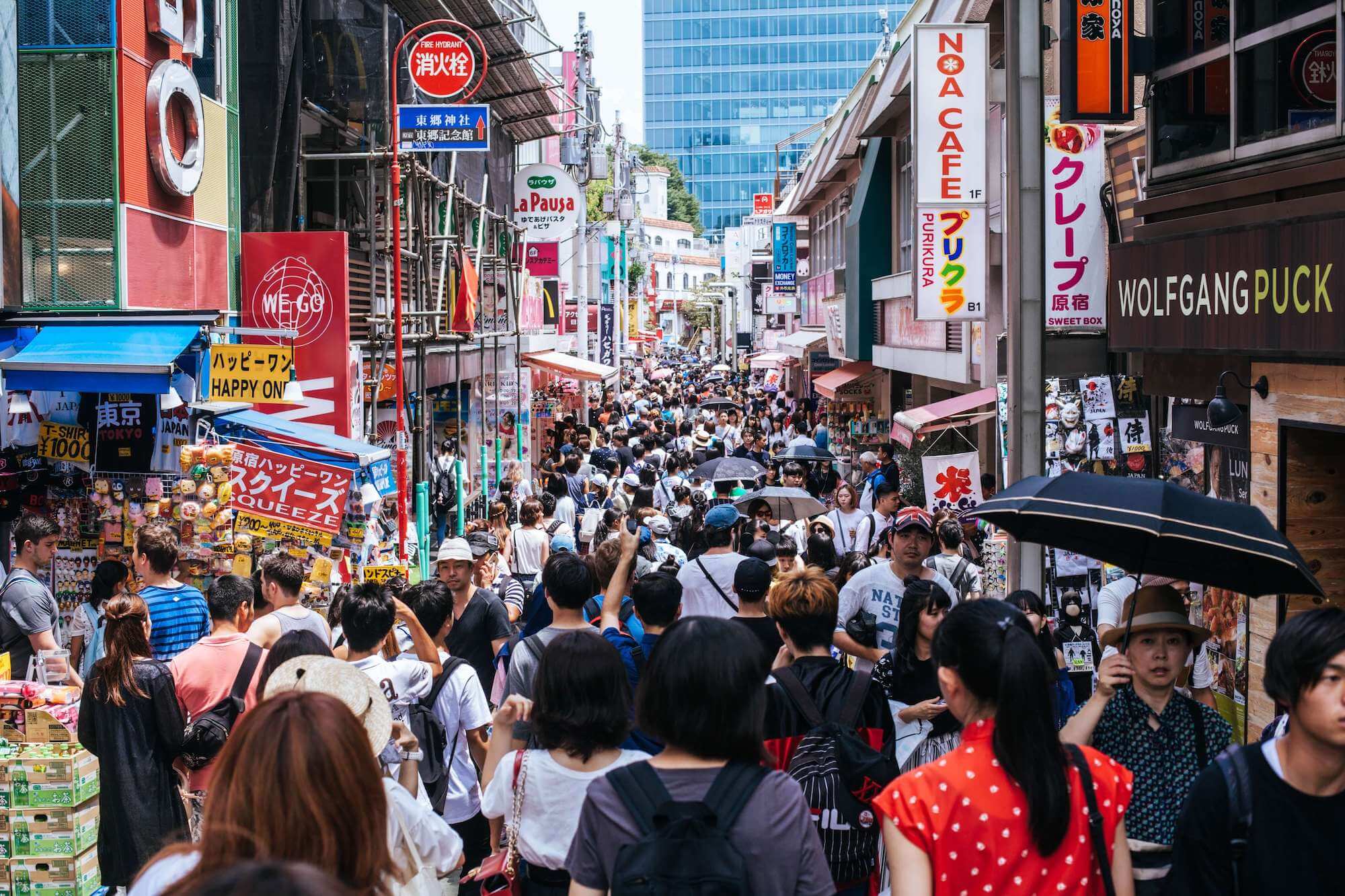Japan is a land where ancient traditions and modern life intertwine seamlessly. For travelers, one of the most captivating aspects of Japanese culture is its spirituality. Two major belief systems—Shinto and Buddhism—coexist in a uniquely Japanese way. But what exactly is the difference between them, and how can travelers respectfully engage with both? This guide offers a simple and practical breakdown to help you understand what you’re seeing and experiencing when you visit temples and shrines in Japan.
Table of Contents
What Makes Japan’s Spiritual Landscape Unique?
Japan’s religious landscape is a beautiful fusion of Shinto and Buddhism. Unlike many countries where one religion dominates, Japan embraces a blend of these two philosophies. Shinto, the indigenous belief system of Japan, emphasizes harmony with nature and reverence for spirits called kami. Buddhism, introduced from mainland Asia in the 6th century, focuses on achieving enlightenment and understanding the nature of suffering.
What makes this coexistence remarkable is how seamlessly the two religions blend into daily life. It’s common for people in Japan to visit a Shinto shrine for New Year celebrations, get married in a Shinto ceremony, and hold funerals in Buddhist temples. This harmonious duality often surprises visitors who are used to religious exclusivity. For travelers, understanding this context enriches your cultural experience and deepens your appreciation of the places you visit.
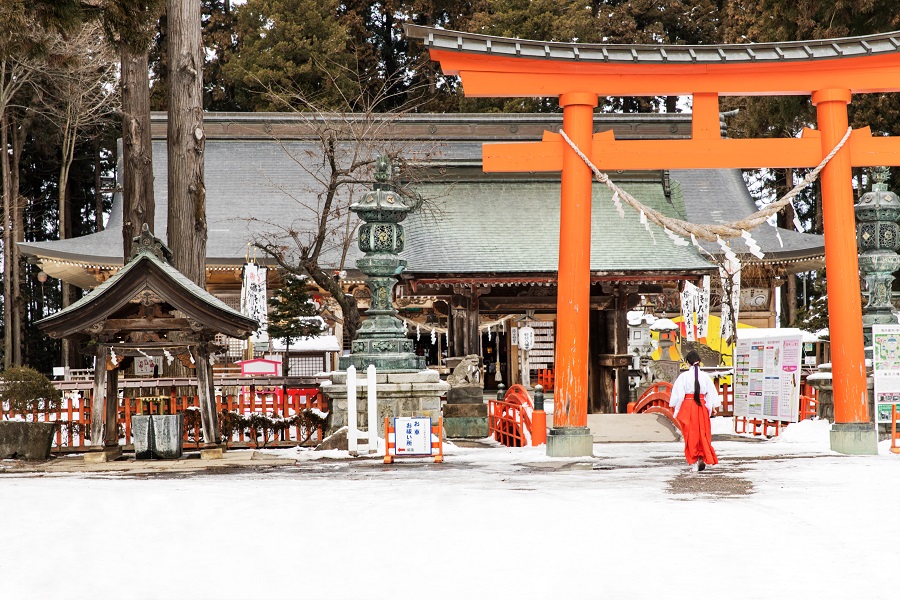
Credit: visithachinohe.com
As you explore Japan, you’ll encounter both Shinto shrines and Buddhist temples. While they may appear similar at first glance, they serve different purposes and follow distinct rituals. Recognizing the differences will help you participate respectfully and fully appreciate the cultural and spiritual significance of each site.
Shinto: The Way of the Kami
Shinto is Japan’s native religion, rooted in the worship of kami—spiritual beings associated with nature, objects, and ancestors. The word “Shinto” means “way of the gods,” and its practices focus on maintaining harmony with nature and purifying the body and spirit. Shinto does not have a founder or a formal scripture. Instead, it thrives through rituals, traditions, and a deep respect for nature.
Shrines (jinja) are the sacred spaces of Shinto, typically marked by a red Torii gate that symbolizes the transition from the mundane to the sacred. These gates are iconic and often surrounded by trees, emphasizing the connection between spirituality and the natural world. Inside the shrine, you’ll find a main hall, purification fountain, and often small sub-shrines or statues representing various kami.
When visiting a shrine, purification is a central ritual. Travelers are encouraged to wash their hands and mouth at the temizuya (purification basin) before approaching the main hall. To pray, offer a small coin, bow twice, clap twice, and bow once again. You may also encounter ema—wooden plaques where visitors write wishes—and omikuji, fortune slips tied to trees or racks. Participating in these simple practices offers a window into Japan’s spiritual life.
Buddhism in Japan: A Path Toward Enlightenment
Buddhism arrived in Japan from China and Korea around the 6th century and gradually integrated with existing Shinto beliefs. Japanese Buddhism encompasses various sects, including Zen, Pure Land, and Nichiren, each with its own interpretations and rituals. Despite differences, all emphasize the impermanence of life, the nature of suffering, and the pursuit of enlightenment.
Buddhist temples (otera) are widespread across Japan and are often grander and more ornate than Shinto shrines. These temples house sacred images of Buddha and bodhisattvas, along with incense burners, meditation halls, and pagodas. A temple complex may include multiple buildings, gardens, and even cemeteries, reflecting Buddhism’s role in funerary practices and ancestor worship.
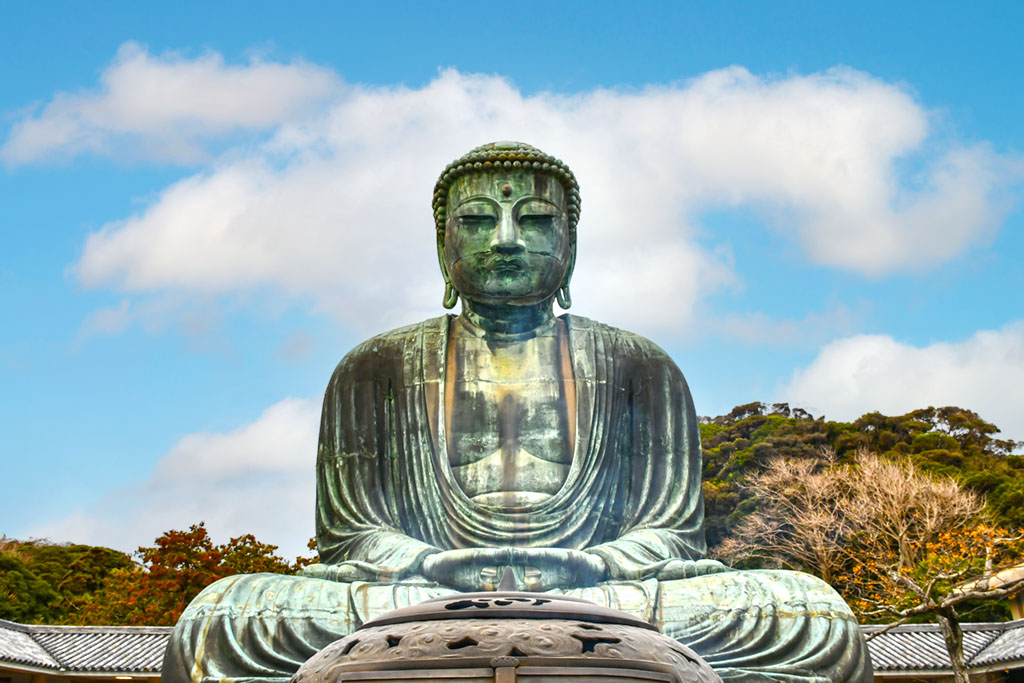
The world-famous Great Buddha of Kamakura at Kotoku-in requires little introduction.
When visiting a temple, the atmosphere is generally more serene and introspective. Instead of clapping as at a shrine, visitors typically bow silently, light incense, and may observe or join in chanting. Removing your shoes before entering certain areas is common, especially in meditation halls or inner sanctums. Many temples offer opportunities to participate in zazen (seated meditation) or purchase omamori (protective amulets) for health, travel, or success.
Shinto vs. Buddhism: Key Differences at a Glance
To the untrained eye, shrines and temples might look alike, but they have distinct architectural elements, symbols, and rituals. A Shinto shrine will almost always feature a Torii gate at the entrance, while a Buddhist temple might have a large entrance gate (sanmon) and a pagoda. Shrines use natural, unpainted wood or bright red hues, symbolizing purity. Temples often use darker tones and feature statues of Buddha.
In terms of rituals, Shinto emphasizes physical purification and celebration of life events—births, weddings, and festivals. Buddhism, on the other hand, focuses on introspection, prayer, and ceremonies related to death and the afterlife. The roles of the priests also differ: Shinto priests wear traditional robes and conduct seasonal rituals, while Buddhist monks often shave their heads and lead meditation or funeral rites.

Credit: hans-johnson/flickr
Understanding these differences helps travelers approach each site with proper respect. For example, clapping your hands at a Buddhist temple would be out of place, just as chanting sutras at a shrine wouldn’t align with Shinto customs. Observing and emulating the behaviors of locals is always a respectful approach.
Can You Practice Both? Understanding Religious Harmony in Japan
One of the most fascinating aspects of Japanese spirituality is how comfortably Shinto and Buddhism coexist. This syncretism is reflected in daily life: people visit Shinto shrines to pray for success in business or academics and turn to Buddhist temples to honor ancestors or mourn the deceased. Most Japanese people don’t see themselves as belonging strictly to one religion; rather, they adopt practices from both as needed.
Historically, the two religions were so intertwined that many temples included shrines and vice versa. It wasn’t until the Meiji Restoration in the late 19th century that the government officially separated them in a policy known as Shinbutsu bunri. Despite this political separation, spiritual practices continued to merge naturally in people’s lives.
For travelers, this duality is not only a cultural curiosity but also an invitation to broaden your own perspective. Experiencing both types of sites offers a richer understanding of how Japanese people navigate spirituality. You don’t need to choose one path—embracing both is part of the experience.
Tips for Travelers: How to Visit Respectfully
When visiting a Shinto shrine, start by bowing once at the Torii gate. Proceed to the temizuya to purify your hands and mouth. At the offering hall, toss a coin into the box, bow twice, clap twice, and bow once more. Avoid stepping into areas marked as sacred or closed to the public. Photography is often permitted outdoors but should be avoided inside the main sanctuary unless signs indicate otherwise.
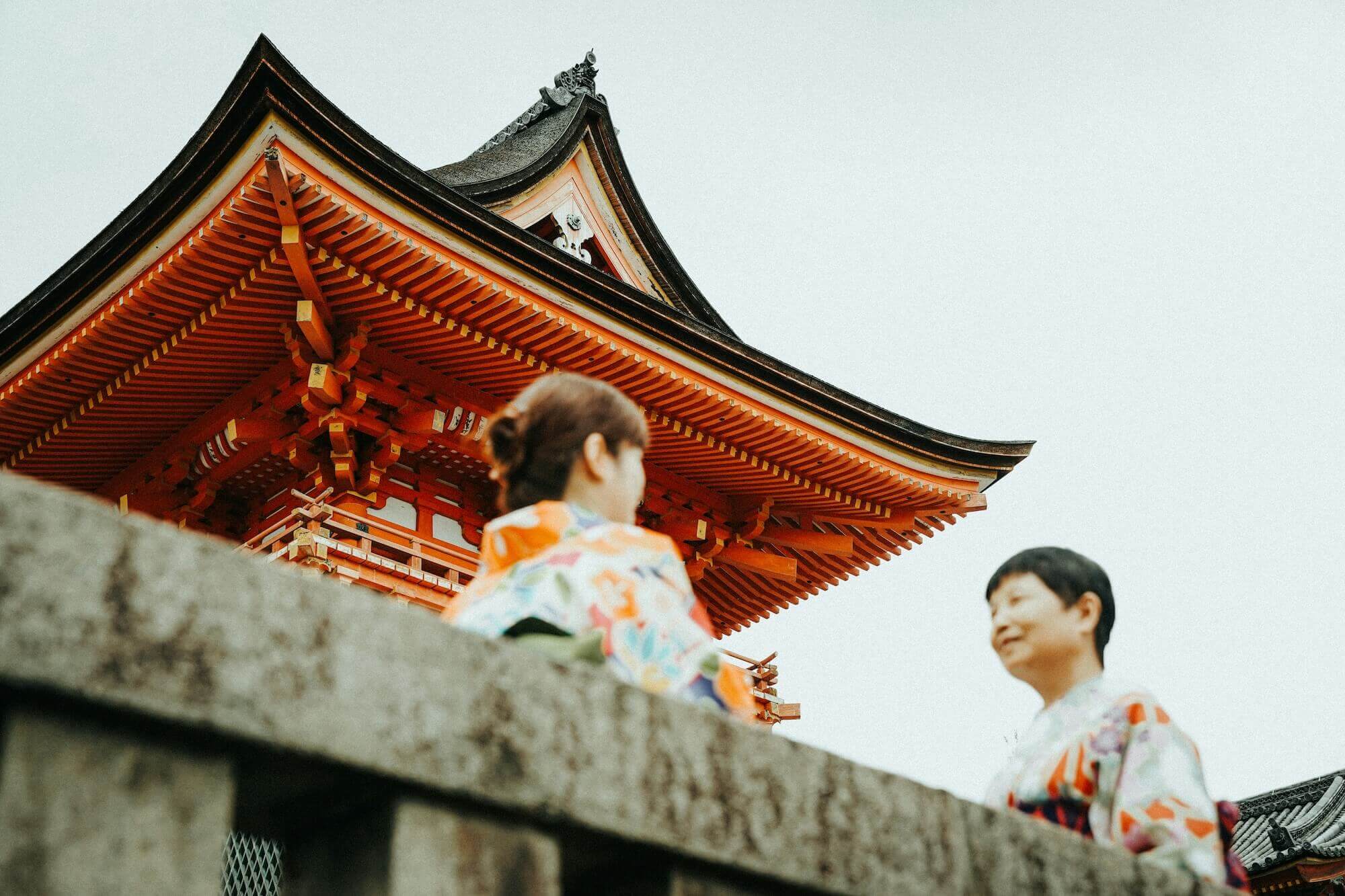 At Buddhist temples, maintain a quieter and more contemplative demeanor. Bow at the entrance, remove your shoes if entering interior spaces, and speak in low tones. Lighting incense and placing it in the burner is a common form of offering. If you see people sitting in meditation or monks chanting, observe respectfully and do not interrupt.
At Buddhist temples, maintain a quieter and more contemplative demeanor. Bow at the entrance, remove your shoes if entering interior spaces, and speak in low tones. Lighting incense and placing it in the burner is a common form of offering. If you see people sitting in meditation or monks chanting, observe respectfully and do not interrupt.
Dress modestly, avoid eating or drinking in sacred areas, and always check for signs indicating proper conduct. Whether you’re visiting a shrine or temple, behaving with awareness and humility will always be appreciated by locals and caretakers.
Bonus: Popular Shrines and Temples to Visit in Japan
Japan is home to thousands of shrines and temples, each with unique characteristics and histories. Among the most famous is Fushimi Inari Taisha in Kyoto, known for its thousands of vermilion Torii gates winding through a forested hillside. It’s a Shinto shrine dedicated to Inari, the kami of rice and prosperity.
Another iconic Shinto site is Meiji Jingu in Tokyo, surrounded by a tranquil forest in the heart of the city. Dedicated to Emperor Meiji and Empress Shoken, the shrine attracts millions during the New Year for hatsumode (first shrine visit of the year).
On the Buddhist side, Senso-ji Temple in Tokyo’s Asakusa district is a must-visit. It’s Tokyo’s oldest temple, famous for its giant red lantern and bustling market street. In Kyoto, don’t miss Kinkaku-ji (Golden Pavilion), a stunning Zen temple covered in gold leaf, reflecting peacefully over a tranquil pond.
Appreciating Japan’s Spiritual Duality
Understanding the difference between Shinto and Buddhism isn’t just about recognizing architecture or rituals—it’s about appreciating Japan’s unique approach to spirituality. The peaceful coexistence of two belief systems teaches openness, respect, and balance.
As you journey through Japan, let curiosity and reverence guide your visits. Whether you’re climbing the steps of a mountain shrine or meditating in a silent temple garden, you’re stepping into a culture that honors both the seen and unseen. In doing so, you’ll not only witness Japan’s spiritual heritage—you’ll experience it firsthand.






